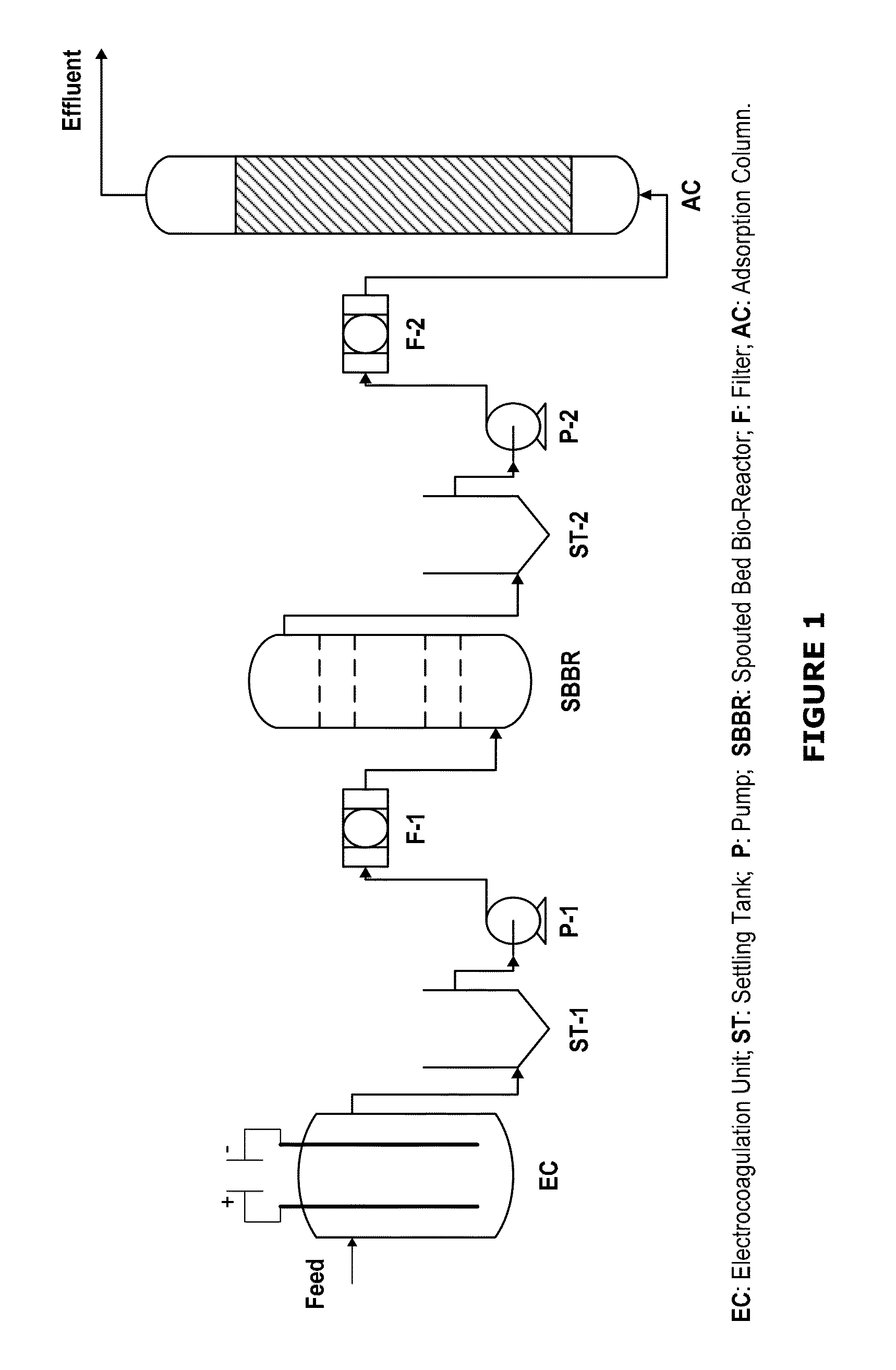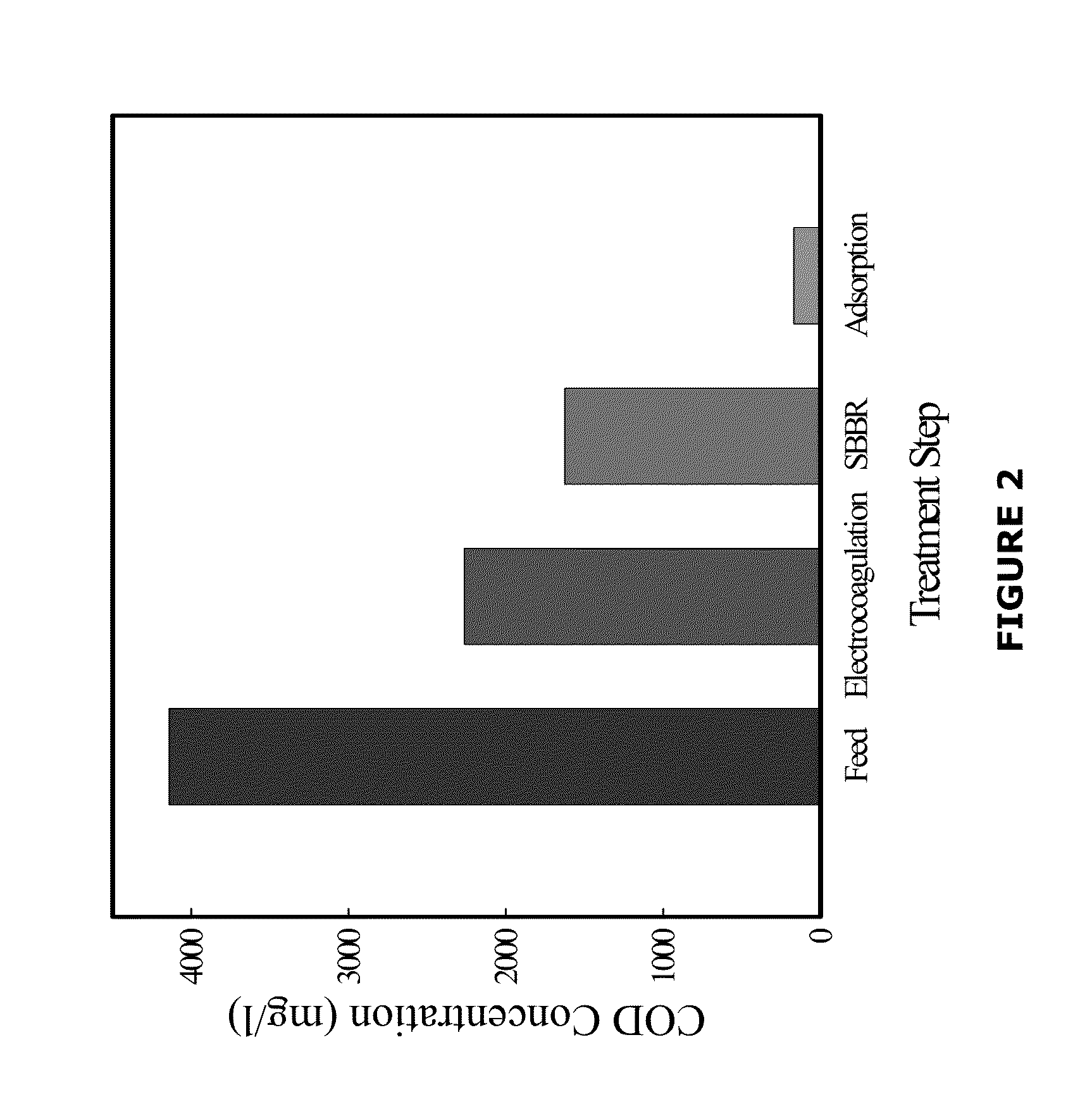Process And System For The Treatment Of Industrial And Petroleum Refinery Wastewater
a technology for industrial and petroleum refinery wastewater and treatment system, which is applied in the nature of treatment water, multi-stage water/sewage treatment, and treatment involving filtration, etc. it can solve the problems of limiting the allowable level of pollutants, affecting the quality of surface and ground water sources, and affecting the health of aquatic life. , to achieve the effect of reducing the risk of pollution, and improving the quality of surface and ground water
- Summary
- Abstract
- Description
- Claims
- Application Information
AI Technical Summary
Benefits of technology
Problems solved by technology
Method used
Image
Examples
Embodiment Construction
Bacterial Suspension
[0046]A special strain of the bacterium P. putida (A300) was obtained in a AMNITE cereal form from Cleveland Biotech Ltd., UK. A 100 g of the cereal was mixed in a 1 L of 0.22% sodium hexametaphosphate buffered with Na2CO3 to a pH of 8.5. The mixture was homogenized in a blender for about one hour, decanted and kept in the refrigerator at 4° C. for 24 hours. Bacteria slurry was prepared by first low speed centrifugation at 6000 rpm for 15 minutes. Then, the supernatant was collected and centrifuged again at 10,000 rpm for 20 minutes. Harvested bacteria cells were collected and kept in the refrigerator for immobilization.
Immobilization of Bacteria in PVA Gel
[0047]Polyvinyl Alcohol (PVA) gel was used for immobilizing the bacteria cells. A homogenous PVA solution was prepared by mixing 100 g of PVA powder with 900 ml of distilled water at about 70-80° C. The formed mixture was allowed to cool to room temperature before adding 10 ml of the bacterial suspension, and t...
PUM
| Property | Measurement | Unit |
|---|---|---|
| temperature | aaaaa | aaaaa |
| temperature | aaaaa | aaaaa |
| temperature | aaaaa | aaaaa |
Abstract
Description
Claims
Application Information
 Login to View More
Login to View More - R&D
- Intellectual Property
- Life Sciences
- Materials
- Tech Scout
- Unparalleled Data Quality
- Higher Quality Content
- 60% Fewer Hallucinations
Browse by: Latest US Patents, China's latest patents, Technical Efficacy Thesaurus, Application Domain, Technology Topic, Popular Technical Reports.
© 2025 PatSnap. All rights reserved.Legal|Privacy policy|Modern Slavery Act Transparency Statement|Sitemap|About US| Contact US: help@patsnap.com



